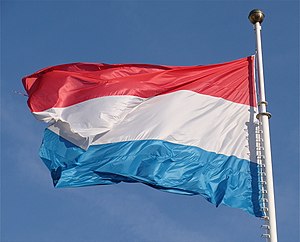
It’s Halloween, and I’m in Disneyland Paris in a queue. No surprises there, as anyone who has ever been to Disneyland Paris will confirm: queuing is inevitable. For anyone with a low tolerance of queues, such as my husband, the best advice is to avoid it.
But we’re old hands, my sister, my daughter, and me. We’ve been coming here once every year or so since Laura was 4 – old enough to appreciate it yet young enough to believe in its magic. (My sister, aged 60, is still at that stage).
Over the years, we’ve become adept at keeping our queuing time to a minimum. But tonight’s queue is different.: I’m not awaiting a turn on a ride, but lining up, early evening, for refreshments in a Disneyland Main Street cafés. Like everyone else around us, we’re exhausted, but hanging on for the end-of-day audio-visual display before we head back to our hotel for the night. Having seen the show the night before, we know it’s worth the wait.
Looking Forward – and Backward – To Fireworks

Thanks to 21st century technology, the end-of-day show is far more sophisticated than when I first went to Disneyland, as a child living in California for a year. In those days, there was only one Disneyland, and we had the good fortune to live close by. Back then, we thought the traditional display behind Sleeping Beauty’s Castle was spectacular, but it was nothing compared to what we’re about to see. This display uses the Castle as a projection screen for a complex laser show, transforming it into Notre Dame, the Scottish castle in “Brave”, Beauty and the Beast’s palace, and more. Not only fireworks but huge blasts of fire shoot into the air around the castle, warming us all the way down Main Street.
After a day of bright sunshine and clear blue sky, the night air is bitterly cold, and we need internal warming to tide us over until the display begins, and so we’ve hit the café. I’ve parked my sister and my daughter in a cosy, comfortable booth of this Victorian-themed fast-food cafés, and I’m queuing at the self-service counter for tea and cake.
Fast Food It Ain’t

As in all Disneyland Paris’s fast food outlets, the term “fast” is a bit of a misnomer. The French simply do not understand the concept of fast food. If they did, the Park’s profits would surely soar, as they’d serve thousands more meals and snacks every day.
I resign myself to waiting however long it takes to reach the cashier and spend some time inspecting the display of Halloween-themed cakes. Having chosen a fruit tart to share between the three of us, I lean back against the brass rail that runs the length of the self-service counter, channelling the queue towards the till, and I turn my attention to the others in the queue. It’s a good thing that I enjoy people watching: it helps pass the time.
Behind me I observe two American ladies who are just deciding to buy four souvenir plastic cups, adding 20 Euros to their drinks bill. This purchase seems rather coals-to-Newcastle, considering they hail from the land of Disney. I wonder whether they’ve thought how much suitcase space these cups will require on their journey home.
Halloween Treats

In front of me is a middle-aged French lady whose loaded tray includes two pumpkin-coloured tarts adorned with marshmallow ghosts. I’m just speculating whether they contain real pumpkin when I’m distracted by the appearance of a small olive-skinned child whose curly head is bobbing under the brass railing beside me. Pushing through to the counter, she stands on tiptoe beside the lady with haunted tarts, one of which I assume is destined for her. I’m therefore surprised when the little girl reaches up to the counter to help herself to another one exactly the same. The French woman looks down, startled, without a flicker of recognition of the child. They’re not together.
Although I know that not everyone is as disciplined at queuing as we English, but still I wonder at the child’s cheek. I wonder whether her mother has already reached the till and sent her to collect the cake as an afterthought? A glance at the front of the queue tells me otherwise: a man on his own is carrying off a tray without a glance at the child.
Then, as quickly as she appeared, the little girl vanishes, dashing off down the café among the banquettes, the pastry still in her hand. The French woman and I exchange astonished glances as the child settles down next to two coffee-drinking women.
The Mystery of the Vanishing Cake
Next up at the till, the French woman lays into the cashier indignantly. He and his coffee-making colleague are not perturbed: it seems they’re used to such infringements.
“Ça n’est pa grave,” he assures her, totting up her bill and sealing plastic lids on to her drinks order. “Ça fait rien.”

I know enough French to recognise that the lady thinks it very grave indeed. As she pays, she continues to rail against the child’s action, the body language on both sides of the counter becoming more pronounced as words fail to resolve her disagreement with the cashier. I begin to wonder whether she’s about to make a citizen’s arrest. Finally, she gives up, muttering crossly as she retreats with her tray to her table.
The child’s mother seems even less concerned than the cashier, continuing to drink coffee and chat to her companion, though she must have noticed her child’s petty theft.
Thankful that at last it’s my turn at the till, I order our teas and pay. As I’m waiting for my drinks to be poured, I hear a rustle at my side at waist level. The little girl has returned. Ah, I think, she’s seen the error of her ways and come to apologise, perhaps paying from her own pocket money as a punishment.
She pushes past me without a care and smiles innocently up at the cashier, before saying in fluent French: “Please may I have a spoon with which to eat my cake?”
With a twinkle in his eye, the cashier passes her a spoon. Well, it is Halloween, after all.
If you enjoyed this post, you might like this anecdote about self-catering in France: Always Read The Label








